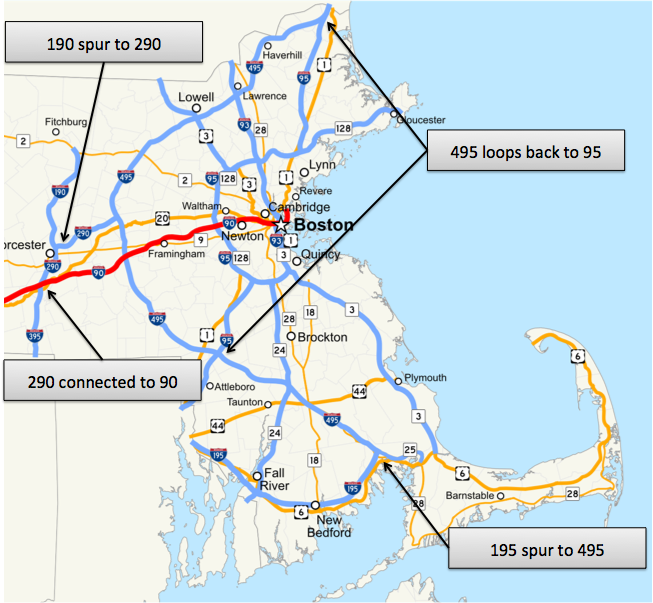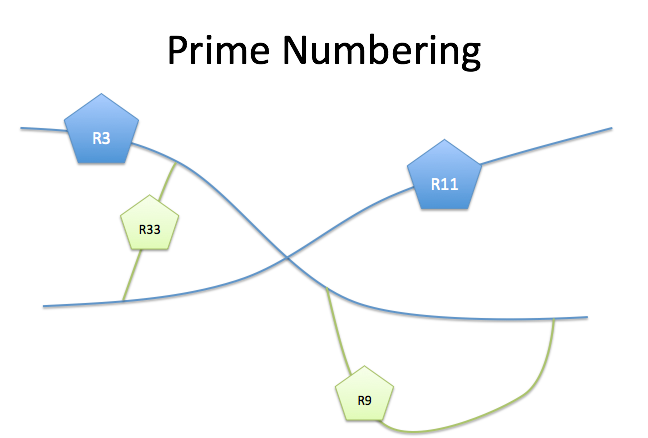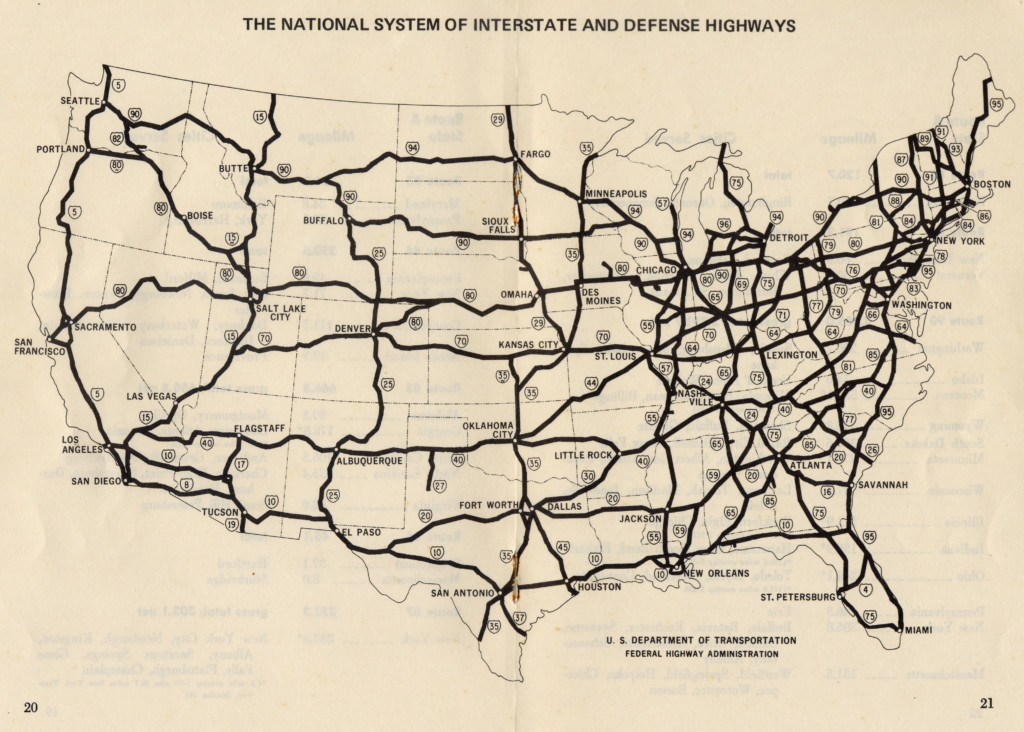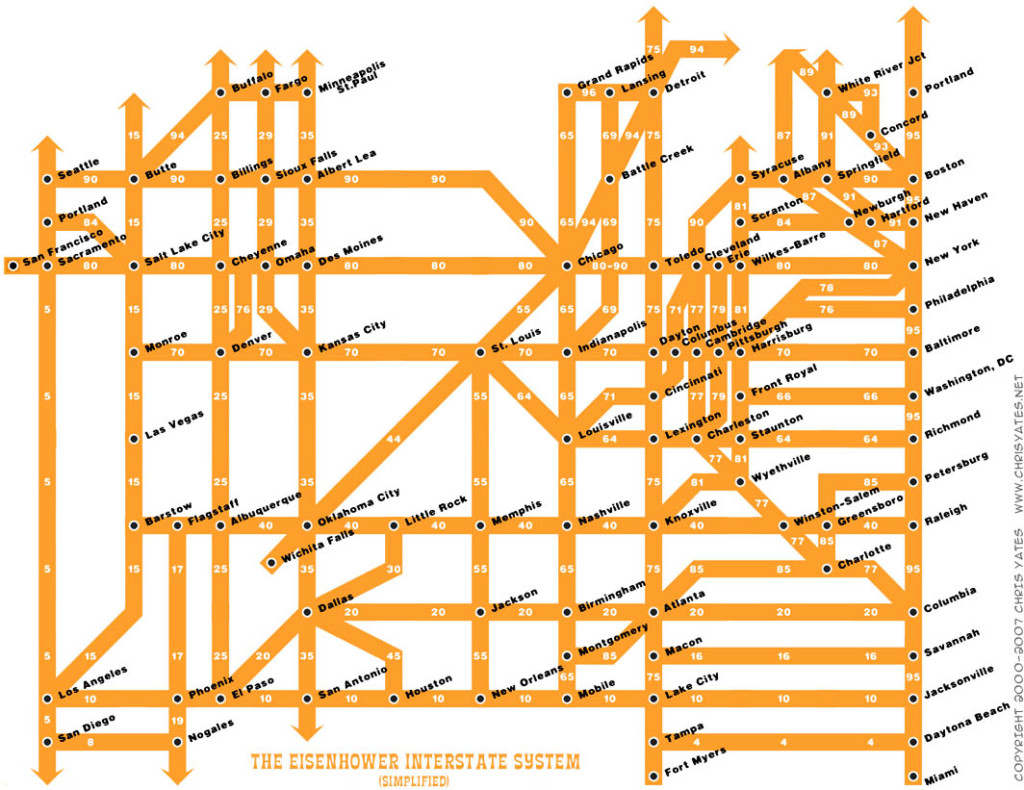At first glance, the US highway seems like a jumble of roads:
However, the numbers follow a grid, with rules nobody told me (image source, click to enlarge):
Even numbers go East/West (I-90, I-10), and odd numbers go North/South (I-5, I-95). Think "Even" goes "East".
Numbers increase towards the Northeast. (Hey, NYC thinks it's the center of the world, right?) I-5 is on the West coast, I-95 on the East coast. I-10 must be in Texas, I-90 must be in Massachusetts.
Auxiliary interstates connect to the primary ones, and have 3 digits: 290 connects to 90, 495 connects to 95, etc.
- Odd prefixes (190) connect once into the city from the interstate ("spur").
- Even prefixes (495) typically loop around a city. (Being a man-made system, there are exceptions.)

Whoa. There's so much information conveyed in a simple numbering scheme! Without looking at a map, I know I can drive from Seattle to Boston on I-90. Maybe I'll take I-95 South when I'm there and make my way to Florida. On the way I'll take I-10 West, over to LA, then drive up I-5 North back to Seattle.
How does this work?
We have a concept of a number, and all its properties (even/odd, size, number of digits...)
We noticed a real-world object (a highway) that had various properties (North/South, position, major/minor)
We associated the properties of the number to the properties of the object

This is thinking mathematically. It's not about doing arithmetic quickly, or memorizing formulas, it's about connecting patterns. Math is a zoo of made-up objects that we relate to ones in the real world. The "usefulness" of the made-up objects depends on our imagination.
Extending the highway system
Have we used all the interesting properties of a number? How about whether it's a prime number.
Suppose local routes used small prime numbers: Route 2, 3, 5, 7, 11. (Yep, remember that 2 is prime.)

Once the main routes are numbered, smaller roads that connect them can follow this rule:
If you connect two routes, use their product. 3 * 11 = 33, so Route 33 connects Route 3 and 11.
If you loop back to the same route, just square it. 3 * 3 = 9, so Route 9 connects Route 3 to itself.
If you connect three roads, it could be Route 66 (connecting routes 2, 3 and 11).
Will this always work? You bet. Any two primes, when multiplied, give a unique number. 33 will never be reached by any other combination of primes. (The fancy math phrase: every number has a unique prime factorization.)
Computer Science
See how we're trying to cram a bunch of information into a little number? That's the essence of binary data.
An eight-bit binary number like 01000100 is essentially eight true/false questions:
- Are you East/West? (1 if yes, 0 otherwise)
- Are you local connection? (1 if yes...)
- Are you a spur road?
- Treating your route number as a set of binary digits...
- Anything in the ones digit?
- Anything in the twos digit?
- Anything in the fours digit?
- Anything in the eights digit?
- Anything in the sixteens digit?
An 8-bit binary number can pack in a bunch of related questions into a single byte, and is what makes binary so efficient.
Onward and Upward
Numbers have a bunch of properties, right? Aren't we curious to discover more, like the remainder (modular arithmetic)? Maybe Route 12 (which is one set of 11, remainder 1) has some connection to Route 11.
Happy math.

